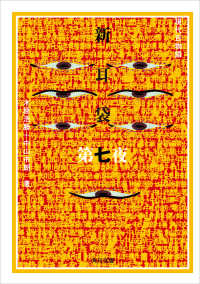Description
Media/Society: Technology, Industries, Content, and Users provides a framework to help students understand the relationship between media and society while developing skills to critically evaluate both conventional wisdom and one’s own assumptions about the social role of media. The Eighth Edition retains its basic sociological framework but has been thoughtfully streamlined in length, while still including additional discussions of new studies and up-to-date material about a rapidly changing media landscape. With updated research, the latest industry data, and current examples from popular media, this edition helps illustrate enduring themes in the sociology of media.
Table of Contents
Preface
Acknowledgments
About the Authors
Part I: Introduction
Chapter 1: Media/Society in a Digital World
The Importance of Media
Models of Communication Media
A Sociology of Media
A Model of Media and the Social World
Applying the Model: Civil Rights in Two Media Eras
Conclusion
Discussion Questions
Part II: Technology
Chapter 2: The Evolution of Media Technology
The History of Media Technology
Technological Determinism
Social Constructionism
From Print to Television
The Internet
Conclusion
Discussion Questions
Part III: Industry
Chapter 3: The Economics of the Media Industry
Media Companies in the Internet Era
Changing Patterns of Ownership
Consequences of Conglomeration and Integration
The Effects of Concentration
Mass Media for Profit
The Impact of Advertising
Conclusion
Discussion Questions
Chapter 4: Political Influence on Media
Media and Democracy
Free Speech to Free Markets: The Evolution of U.S. Regulatory Policy
Regulation in International Perspective
Competing Interests and the Regulation Debate
Regulating Ownership
Regulating Content
Regulating Access and Distribution
Informal Political, Social, and Economic Pressure
Conclusion
Discussion Questions
Chapter 5: Media Organizations and Professionals
The Limits of Economic and Political Constraints
Decision Making for Profit: Imitation, Hits, and Stars
The Organization of Media Work
Occupational Roles and Professional Socialization
Norms on the Internet, Newer Media, and Newer Organizations
Conclusion
Discussion Questions
Part IV: Content: Media Representations of The Social World
Chapter 6: Media and Ideology
What Is Ideology?
Theoretical Roots of Ideological Analysis
News Media and the Limits of Debate
Movies, the Military, and Masculinity
Television, Popularity, and Ideology
Rap Music as Ideological Critique?
Advertising and Consumer Culture
Ideology Online
Conclusion
Discussion Questions
Chapter 7: Social Inequality and Media Representation
Comparing Media Content and the “Real” World
The Significance of Content
Race, Ethnicity, and Media Content: Inclusion, Roles, and Control
Gender and Media Content
Class and the Media
Sexual Orientation: Out of the Closet and into the Media
Conclusion
Discussion Questions
Part V: Users
Chapter 8: Audiences and Creators
The Active Audience: Balancing Agency and Structure
Decoding Meanings and Social Position
The Social Context of Media Use
The Limits of Interpretation
Content Creation and Distribution
Conclusion
Discussion Questions
Chapter 9: Media Influence
Learning from Media Effects Research
Early Works: Establishing the Agenda
Mitigating Media Effects
Highlighting Media Influence
Mediatization
The Mediatization of Politics
Digital Dilemmas: Online Media Influence
Conclusion
Discussion Questions
Part VI: Afterword
Chapter 10: Globalization and the Future of Media
What Is Globalization?
The Global Media Industry
Interpreting Global Media Content
Regulating Global Media
The Ubiquity of Change and the Future of Media
References
Index








